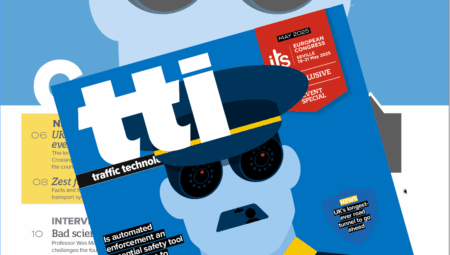To reduce congestion and improve safety, the Minnesota Department of Transportation (MnDOT) has deployed active traffic management (ATM) technology on two freeways in the Twin Cities metropolitan area.
The ATM system incorporates intelligent lane control signals (ILCS) placed over selected lanes at half-mile increments to warn motorists of incidents or hazards ahead. Using this existing ATM infrastructure, researchers from the Center for Transportation Studies (CTS) at the University of Minnesota (UMN) have developed and field-tested two prototypes for queue warning systems in a new MnDOT-funded project.
The warning systems specifically focus on preventing rear-end collisions, which are the most frequent type of crash on freeways. The new prototypes aim to reduce rear-end crashes by addressing stop-and-go traffic and end-of-queue situations, as well as shockwaves, a crash-facilitating condition in which a sudden change in traffic movement causes a cascade of braking. The long-range goal of the project is to develop a unified queue warning system that can be deployed at other locations on Minnesota’s freeway network.
Development of the two prototype warning systems began in 2014, and they were subsequently deployed on two high-traffic freeways in the Twin Cities: I-35W and I-94. To capture traffic data, researchers merged live video from existing camera detector stations with data from in-pavement loop detectors. From this information, researchers developed two algorithms that were used to create a rear-end collision warning system, which can prompt the ILCS units to display warning messages for drivers, such as ‘Prepare to Stop’, ‘Slow Traffic Ahead’, and ‘Traffic Ahead 10 MPH’.
Results of the study show that warning messages delivered by the two prototype systems can be effective at alerting drivers to queuing conditions, with the ultimate benefit of reducing rear-end collisions. At the I-94 test site, the system reduced crashes by 22% and near-crashes dropped by 54%. At the I-35W location, messages delivered by the warning system reduced speed variances by helping drivers maintain a steady speed and curbing stop-and-go traffic.
“Rear-end freeway crashes are a serious safety and mobility problem,” said John Hourdos, director of the Minnesota Traffic Observatory at UMN. “In 2014, these crashes accounted for 38 deaths and more than 5,000 injuries in Minnesota alone. These two locations have significantly different traffic conditions. On I-35W, congestion creates expanding queues, while on I-94 crashes are most likely to occur due to shockwaves that often develop quickly, so warning drivers to these conditions in advance allows them to be more alert and possibly avoid crashes.”




